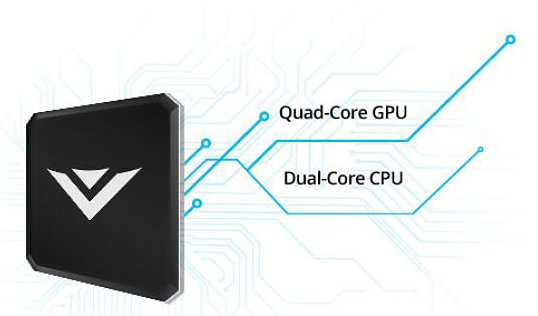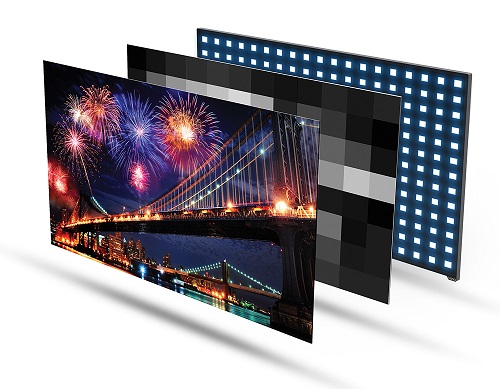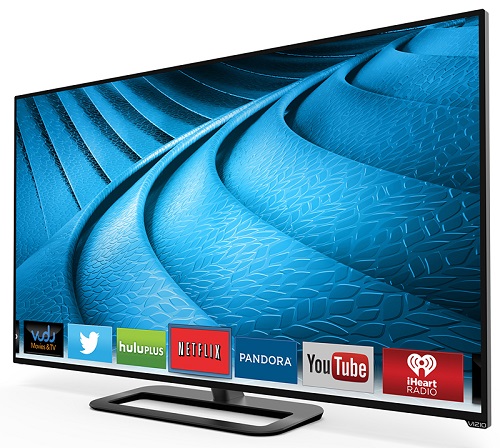4KTVs: A Conversation with Vizio's Carlos Angulo
IRVINE, Calif. ― Is 4K this year's 3D? Or is 4K a genuine leap in technology that will, just as with HD 15 years ago, take root in the production community and become the new standard for all of us?
As with any potential technology advance, there are plenty of chickens and eggs. Although there have been inexpensive 4K TVs from off-brand manufacturers and fairly pricy 4K TVs from well-known name brands, Vizio recently became the first big name manufacturer to announce a 50-inch 4K TV for less than $1,000. To put that into perspective, in 2007 I bought a 47-inch Vizio 1080p TV for $1,650, and thought that was a bargain. In addition to a 50-inch model, the company also introduced 55-, 60-, 65- and 70-inch 4K/UHD models.

These new TVs are powered by a six-core processor.BE Extra spoke with Carlos Angulo, the senior manager for product marketing at Vizio, about the technology behind these consumer TVs and the impact of 4K/Ultra HD.
BE: Vizio became the first major brand-name to break the $1,000 barrier for a 50-inch 4K TV. Why 4K? Isn't HD good enough? Will 4K be the next 3D, or does 4K have legs?
Angulo: 4K Ultra HD is the next generation in the advancement of display technology. Even though the new format offers four times the resolution of full HD displays, resolution is only one component to the benefit that 4K Ultra HD offers. An expanded color space, higher dynamic range and greater contrast ratio will yield a greatly enhanced viewing experience.
BE: What are a couple of the technical obstacles to producing a reasonably priced 4K display?
Angulo: To support the excellent picture quality and Ultra HD experience in our new P-series Ultra HD collection, Vizio engineered a V6 six-core processor. Comprised of a quad-core GPU plus dual-core CPU, the V6 six-core processor delivers maximum speed and advanced graphics processing, enabling an even faster smart TV user experience. To ensure picture quality always remains king, we used the VM50, a dedicated motion and picture-processing engine, to render every image, including Ultra HD content, with incredible detail. P-Series Ultra HD Smart TVs also support the latest standard in streaming thanks to our Internet Apps Plus web interface.
Get the TV Tech Newsletter
The professional video industry's #1 source for news, trends and product and tech information. Sign up below.

Vizio's new 4K/UHD TVs use LED backlighting in active zones to provide deep blacks and high contrast.BE: Although there is no 4K over-the-air broadcasting yet, what steps are you taking to make your 4K TVs future-proof?
Angulo: Vizio's latest connected platform is equipped with support for the HEVC H.265 codec and 802.11ac dual-band WiFi for a better streaming experience that is up to three times faster. These advancements enable consumers to easily stream Ultra HD content through apps like Netflix and launching later this year, Amazon Instant Video and UltraFlix, with HDCP 2.2 support built-in for playback of protected Ultra HD content. Support for the latest HDMI 2.0 standards also helps ensure that these TVs will work into the future, as more consumer electronic devices enter the market, enabling playback of 4K Ultra HD content at up to 60 fps.
BE: The models in your new 4K lineup are "smart TVs," meaning they all have the ability to stream video from the Internet. How do you choose which streaming services will be built into the TVs? Is it possible to do a firmware update to add some other streaming services in the future?
Angulo: We constantly monitor consumer sentiment and evaluate possible new app partners to add to our Internet Apps Plus smart TV platform. We regularly add and update current apps and features for our smart TVs via Internet updates.
BE: With 4K, you have a lot more pixels on the screen as compared to HD. That means you can build really big TVs that still have smooth, clear images. What is the practical limit on the upper end for size, and why? At the smaller end, will we be seeing 32-inch (or smaller) 4K TVs?
Angulo: We are shipping 4K Ultra HD displays from 50-inch to 70-inch sizes. We believe that just as our full HD sizes grew over time, the size offerings for 4K Ultra HD should grow as the popularity of the format grows as well.

Vizio's P552 55-inch 4K/UHD TV can stream from a variety of services. The model has a list price of $1,400.BE: Is there anything else about the technology in Vizio's 4K TVs that our broadcast readers should know?
Angulo: As it has been for many years, the key purchase criteria for consumer TVs remains picture quality. The promise of 4K Ultra HD displays and content speaks directly to continuing consumer demand for a better entertainment experience.
4K TVs are expected to be a strong seller this holiday season, so the role of the TV in the 4K chicken/egg question appears to be hatching quickly. There is some content available to consumers in 4K, and many other productions are shot and posted in 4K. That means that watching your favorite network drama in 4K may be just a stream away.
More pieces of the 4K picture may fall into place when the ATSC 3.0 standard is released. Look for a feature on ATSC 3.0 in an upcoming issue of Broadcast Engineering Extra.
Bob Kovacs is the former Technology Editor for TV Tech and editor of Government Video. He is a long-time video engineer and writer, who now works as a video producer for a government agency. In 2020, Kovacs won several awards as the editor and co-producer of the short film "Rendezvous."

